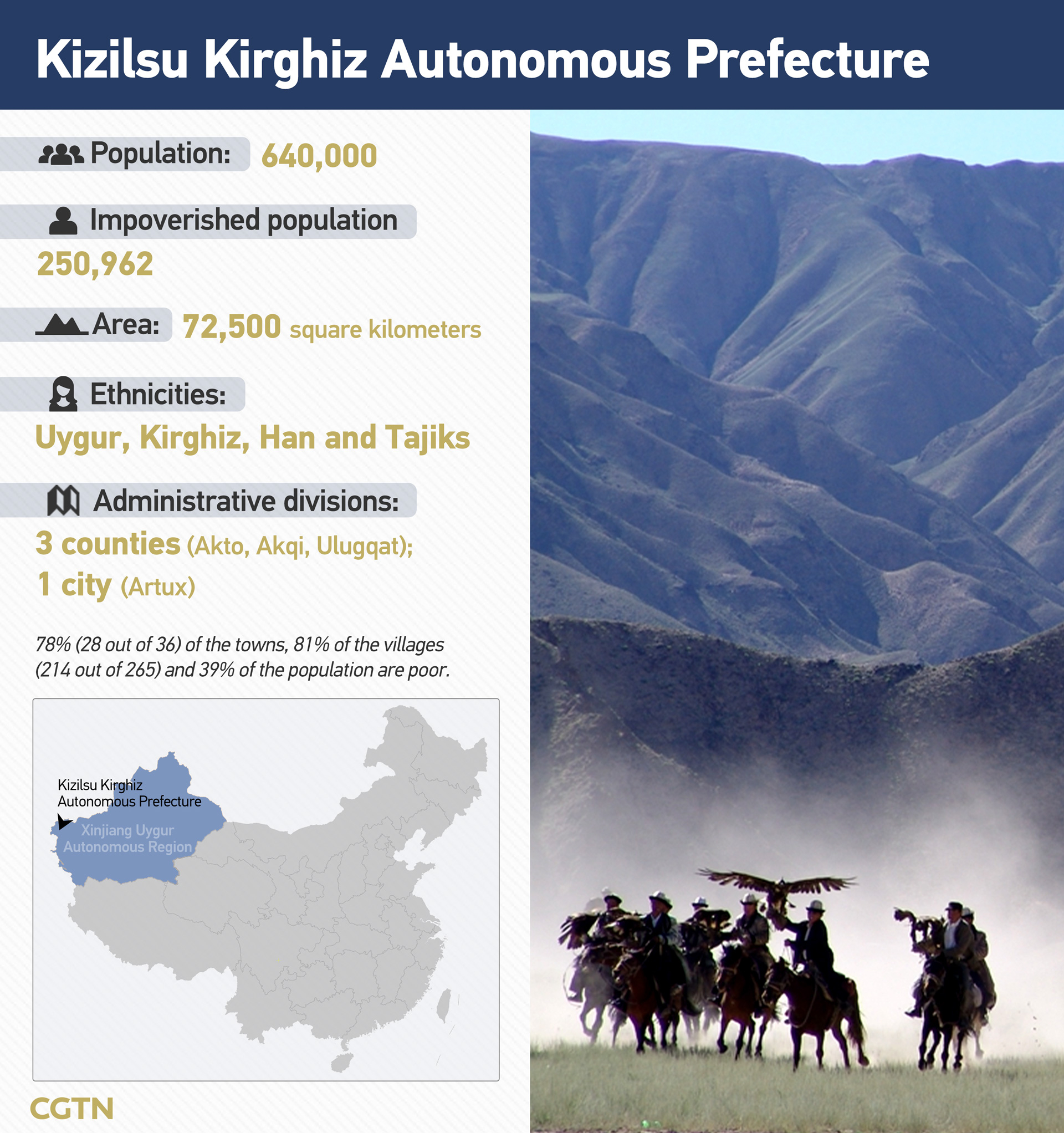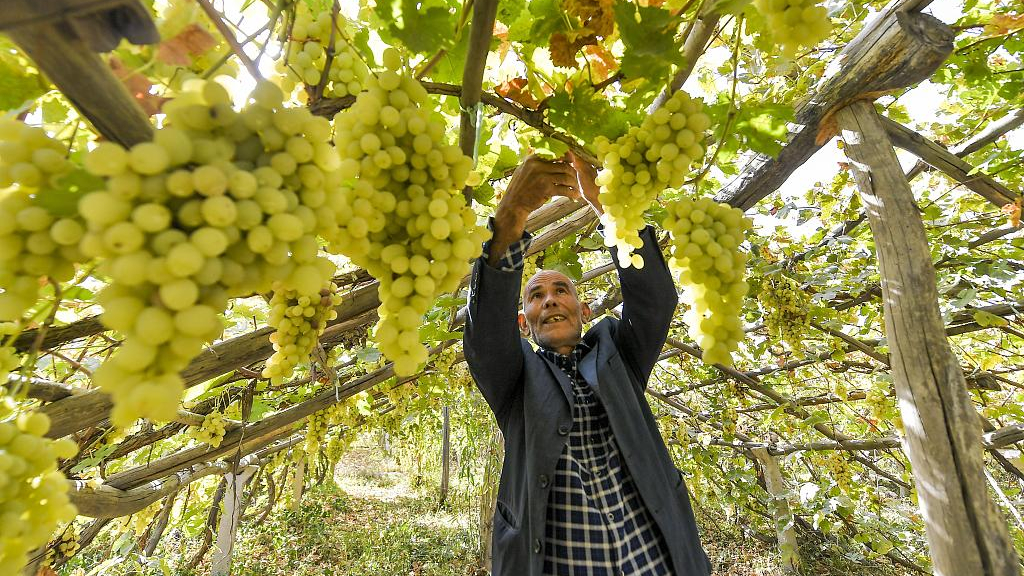Kizilsu Kirghiz Autonomous Prefecture, located in the west of the Xinjiang Uygur Autonomous Region, is the main battlefield in the fight against poverty in Xinjiang and one of the hardest nuts to crack in China's poverty reduction campaign.
Thanks to China's pairing assistance program, Jiangsu and Jiangxi Provinces have been helping the area achieve prosperity.
Kizilsu Kirghiz
Established in 1954, Kizilsu Kirghiz Autonomous Prefecture is located in the west of Xinjiang and borders Kyrgyzstan and Tajikistan in the north and west. The prefecture covers 72,500 square kilometers in area, 90 percent of which are mountainous.

With a population of 640,000, it consists of 11 ethnic groups, including the Uygur, the Kirghiz, the Han and the Tajik. Irkeshtan and Turgart ports are famous in the region as both are important passages of the ancient "Silk Road," and key stations along the China-Pakistan Economic Corridor. Irkeshtan Port is the westernmost tip of China.
In the prefecture, 77.78 percent (28 out of 36) of the towns are considered severe poverty-stricken towns and 80.75 percent of the villages (214 out of 265) are poor, with a registered impoverished population of 250,962 at the end of 2019.
In 2020, the region plans to get 11,677 people and 38 villages out of poverty.
How does pairing assistance work here?
China started to carry out the pairing assistance program in Xinjiang in 1997 when it sent officials from developed regions to work and hold tenures there.
The latest round of pairing assistance, which started in 2010, has involved ministries, 19 provinces and municipalities, which are economically advanced, to help all of Xinjiang's 14 prefectures and cities.
Since the 13th Five-Year Plan (2016-2020) was adopted in 2016, China's Jiangsu and Jiangxi Provinces have made 221 projects and allocated 3.86 billion yuan (545 million U.S. dollars) to help Xinjiang shake off poverty.
Among them, 110 projects and 802 million yuan (113 million U.S. dollars) were arranged to help Kizilsu Kirghiz Autonomous Prefecture, and over 80 percent of the money were used to improve people's livelihood.

A vineyard in Kizilsu Kirghiz Autonomous Prefecture in Xinjiang, northwestern China, October 13, 2019. /VCG
A vineyard in Kizilsu Kirghiz Autonomous Prefecture in Xinjiang, northwestern China, October 13, 2019. /VCG
Jiangsu Province has helped improve the infrastructure construction in the place, and built industrial parks in Artux City and Ulugqat and Akqi counties, attracting 129 enterprises and offering jobs for over 6,200 people.
Jiangxi Province has constructed an agriculture scientific and technological demonstration park, a textile and apparel industry park and a small and micro business incubation park in Akto county, attracting 86 enterprises and getting over 4,000 people employed.
The assistance of the two provinces have also covered education area: 629 million yuan (88.9 million U.S. dollars) were allocated to improve bilingual education and 385 teaching staff were sent to Kizilsu Kirghiz.
In addition, 354 million yuan (50 million U.S. dollars) have been invested in building bilingual schools, vocational schools and middle schools here.
An uplift model
The creative pairing assistance program has worked well in Xinjiang and its success has been considered a role model for other countries, especially neighboring Pakistan.
"Since China has done wonders in its poorest of region – Xinjiang, its governance model, methods and strategies are for all to copy, particularly for Balochistan's uplift," The News International, a Pakistani media, said in a report.
Comparing Pakistan's Balochistan with Xinjiang, the media said Xinjiang's experience can be copied by other provinces and cities of Pakistan to help Balochistan: the federal government can pair Lahore with Quetta or Peshawar with Awaran, for example, allocating a certain amount of money for poverty alleviation program in these areas on a yearly basis.